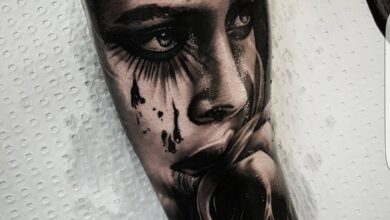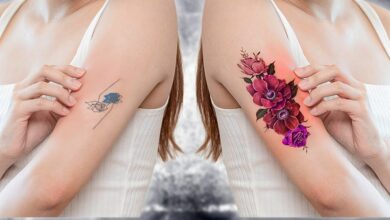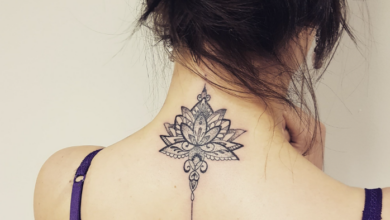
Step into the vibrant world of multicolored tattoos and experience the mastery of this art form. From bold, eye-catching designs to intricate blends of hues, tattoos in technicolor take body art to a whole new level. Whether you’re drawn to the vibrant energy of watercolor-inspired tattoos or the mesmerizing beauty of hyper-realistic designs, this article will explore the artistry and skill required to create stunning multicolored tattoos that are sure to leave a lasting impression. So, prepare to be amazed as we delve into the world of tattoos in technicolor.
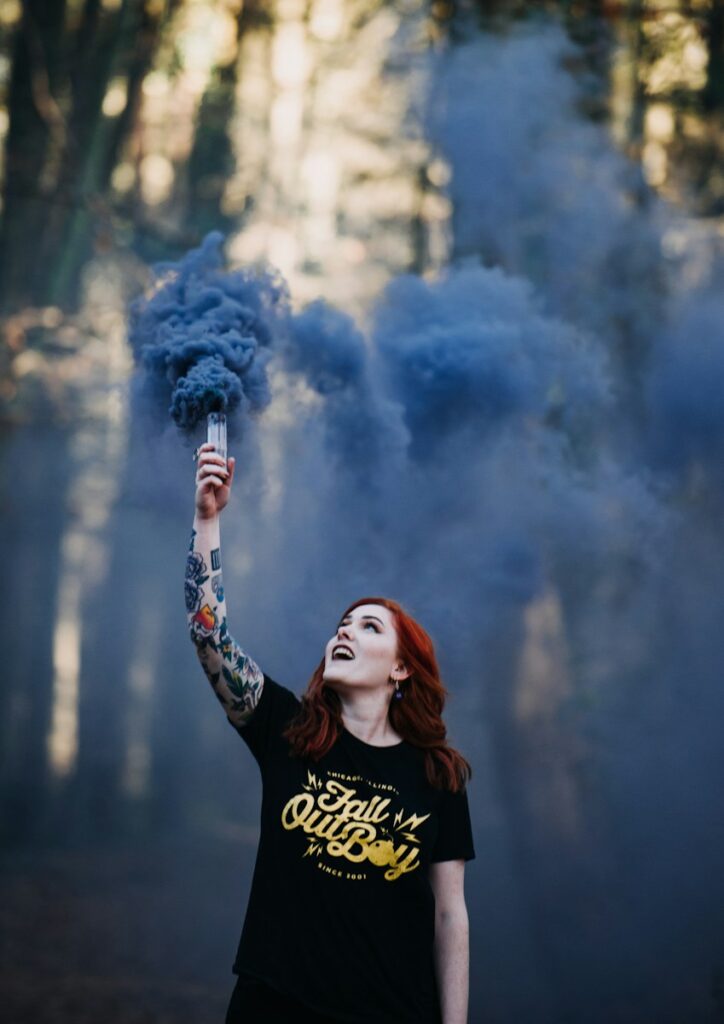
Understanding Technicolor Tattoos
Technicolor tattoos are a vibrant and eye-catching form of body art that incorporates multiple colors in the design. Unlike traditional black and gray tattoos, technicolor tattoos use a wide range of hues to create a vivid and dynamic piece of art. These tattoos are a unique way to express one’s personality, individuality, and creativity.
Definition of Technicolor Tattoos
Technicolor tattoos are a style of tattooing that utilizes a variety of colors to create a multicolored design. These tattoos can range from simple and abstract patterns to highly detailed images. The use of multiple colors allows for a more visually striking tattoo that can be customized to the individual’s preferences and desires.
Evolution and Popularity of Multicolored Designs
The popularity of technicolor tattoos has grown significantly in recent years. In the past, tattoos were often limited to black ink due to the availability of pigments and the traditional preferences of both tattoo artists and clients. However, advancements in tattooing techniques and the development of a wider range of tattoo pigments have opened up a world of possibilities for multicolored designs.
With the rise of social media platforms and the ability to share tattoo art with a global audience, more and more people are embracing the vibrant and captivating nature of technicolor tattoos. They have become a popular choice for those who want to make a bold statement and showcase their creativity.
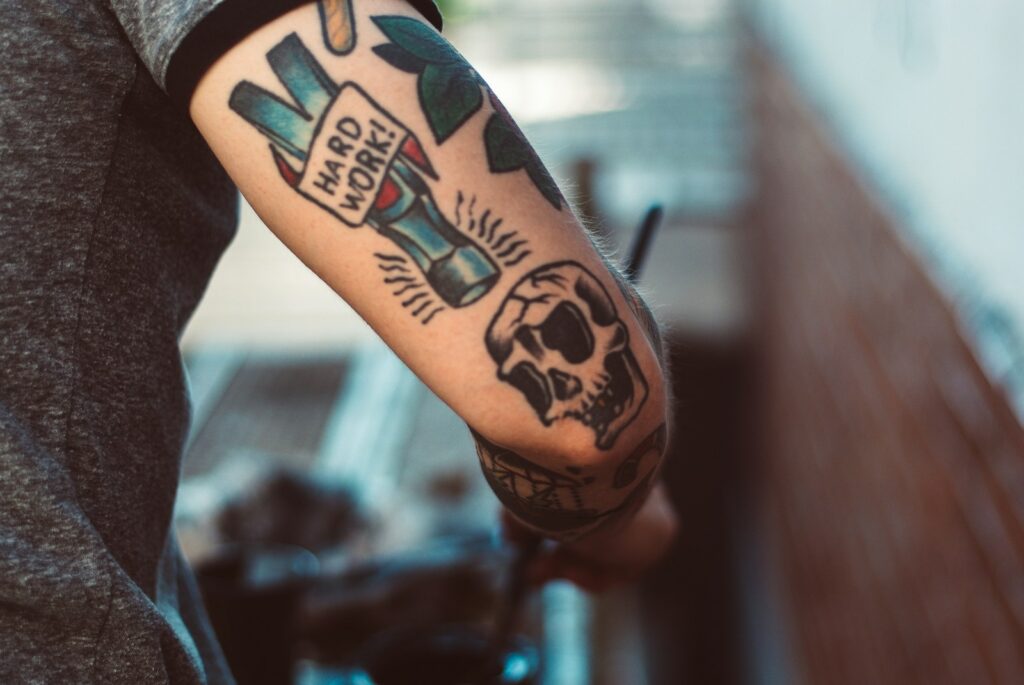
Color Theory in Tattooing
Importance of Color Theory in Tattoo Design
Color theory plays a crucial role in the creation of technicolor tattoos. It helps tattoo artists understand the visual impact and emotional associations of different colors, enabling them to create harmonious and visually appealing designs.
By applying color theory principles, tattoo artists can manipulate various shades, tones, and color combinations to enhance the overall aesthetics of the tattoo. This knowledge allows them to create designs that evoke specific emotions or convey particular meanings through the use of color.
Primary, Secondary, and Tertiary Colors in Technicolor Tattoos
In the world of technicolor tattoos, understanding and utilizing the color wheel is essential. The color wheel consists of primary colors (red, blue, and yellow), which cannot be created by mixing other colors. Secondary colors (orange, green, and purple) are created by mixing equal parts of primary colors. Tertiary colors are formed by mixing a primary color with a neighboring secondary color on the color wheel.
Tattoo artists use these color categories to create a wide range of shades and hues by blending different pigments together. By mastering the use of primary, secondary, and tertiary colors, tattoo artists can create intricate and visually stunning multicolored designs.
Color Combinations and Their Impact on the Overall Design
The choice of color combinations in technicolor tattoos can greatly influence the overall design and the emotions it evokes. Complementary colors, located opposite each other on the color wheel (e.g., blue and orange), create a striking contrast and can make certain elements of the design stand out.
On the other hand, analogous colors, which are adjacent to each other on the color wheel (e.g., blue and green), create a harmonious and balanced effect. Tattoo artists often consider the client’s preferences and the desired mood or message when choosing color combinations to ensure a visually pleasing and meaningful tattoo design.
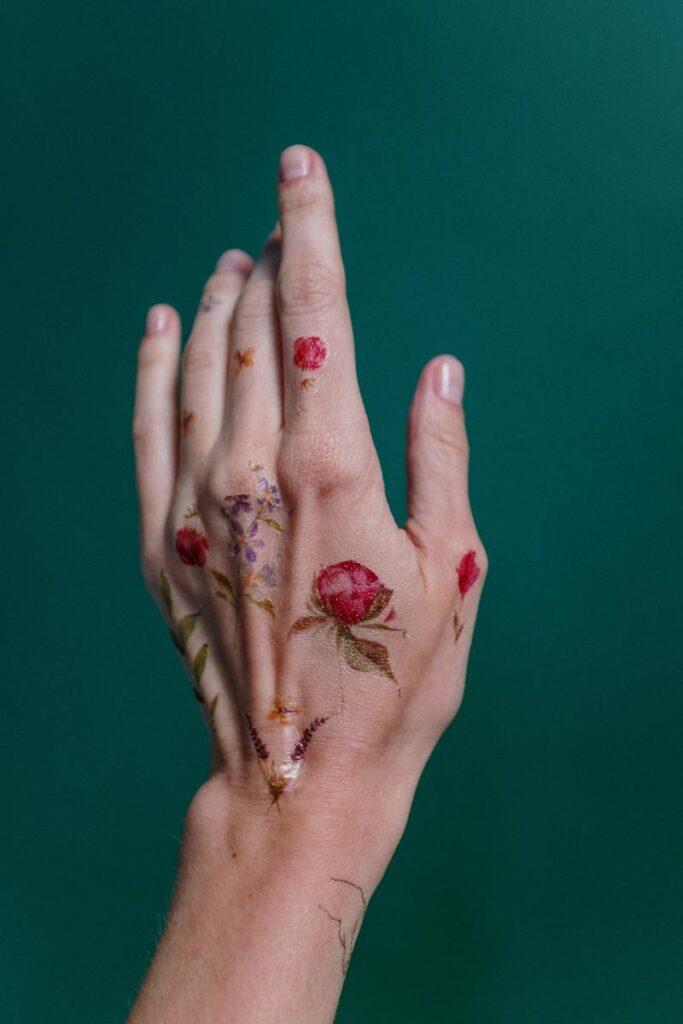
Different Techniques for Multicolored Designs
Traditional Watercolor Style
The watercolor style is a popular choice for creating technicolor tattoos. This technique mimics the free-flowing nature of watercolor paintings, allowing the colors to blend seamlessly and create a softer and more fluid appearance. The result is a visually dynamic and ethereal tattoo that resembles a watercolor painting on the skin.
Tattoo artists who specialize in watercolor style tattoos use techniques such as layering, blending, and feathering to achieve the desired soft and airy effect. The use of vibrant colors and the absence of strict outlines in watercolor tattoos make them a popular choice for those seeking a more unique and artistic tattoo.
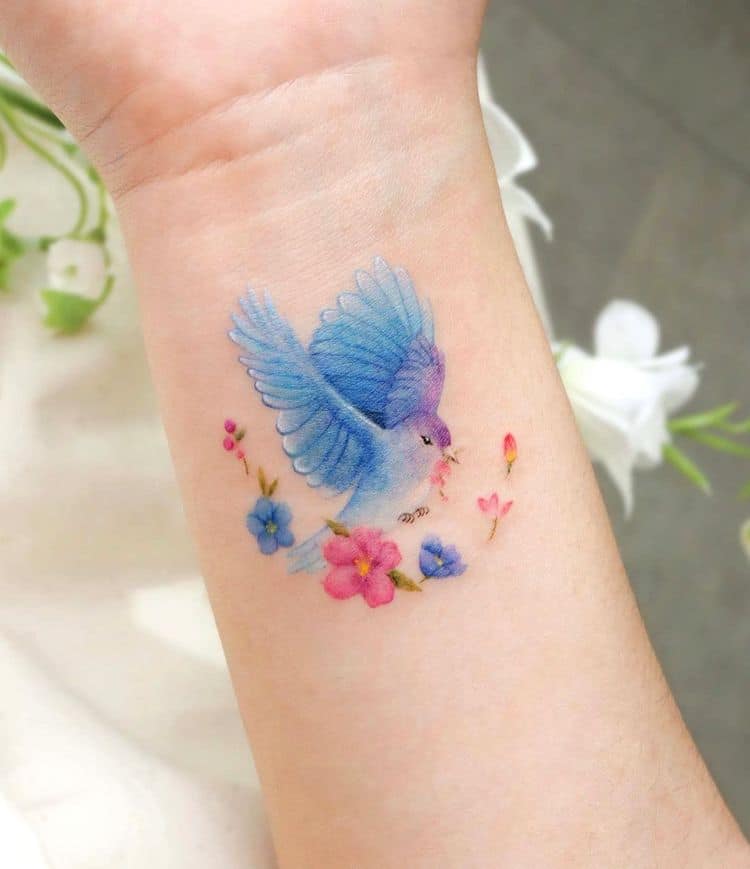
Dotwork and Stippling
Dotwork and stippling are techniques that involve creating a tattoo using only small dots or short strokes. These techniques can be particularly effective in multicolored tattoos, as they allow for intricate and detailed designs. By varying the density and spacing of dots or stippling, tattoo artists can create shading, depth, and texture within the tattoo.
When using these techniques in multicolored tattoos, tattoo artists carefully select a combination of complementary or contrasting colors to achieve the desired effect. Dotwork and stippling techniques can result in visually complex and highly detailed tattoos, making them an excellent choice for those seeking a more intricate and personalized design.
Surreal or Abstract Multicolored Tattoos
Surreal or abstract multicolored tattoos are a testament to the limitless creativity and imagination of both the artist and the wearer. These tattoos often feature dream-like or fantastical elements, incorporating a wide range of vibrant colors and unconventional imagery.
The combination of bold, striking colors and surreal imagery allows for the creation of unique and thought-provoking tattoos. The surreal or abstract style offers the opportunity for self-expression, as the wearer can convey emotions, experiences, or concepts through the use of color and symbolic imagery.
Realistic Color Shading Techniques
Realism in tattooing aims to create an accurate depiction of a subject, whether it be a portrait, an animal, or an object. In technicolor tattoos, realistic shading techniques are used to add depth, dimension, and a lifelike appearance to the tattoo.
Tattoo artists skilled in realistic shading techniques use a combination of color blending, layering, and shadowing to create a three-dimensional effect. By carefully selecting and blending different colors, they can mimic the natural highlights and shadows found in the subject matter, resulting in a visually convincing and striking design.

Choosing the Right Colors
Consideration of Skin Tone and Undertones
When choosing colors for a technicolor tattoo, it is essential to take into account the client’s skin tone and undertones. Different colors can appear differently on various skin tones, so it is important to select colors that will compliment and enhance the individual’s complexion.
For individuals with warmer undertones, colors such as red, orange, and yellow can add warmth and depth to the tattoo. Cooler undertones are better suited for colors like blue, green, and purple. Tattoo artists will often consider these factors during the design process to ensure that the colors chosen will harmonize with the client’s skin tone.
Symbolic Meanings and Associations of Colors
Colors have long been associated with specific meanings and emotions. When choosing colors for a technicolor tattoo, individuals often consider the symbolic meanings behind each color and how they align with their personal beliefs or experiences.
For example, red is often associated with passion, love, and strength, while yellow represents happiness and positivity. Blue is often linked to calmness and peace, while green represents growth and renewal. By incorporating colors with significant symbolic meanings, individuals can infuse their tattoos with personal significance and convey their values or aspirations.
Contrasting and Complementary Color Selection
The selection of contrasting and complementary colors can greatly impact the visual impact and overall aesthetic of a technicolor tattoo. Contrasting colors, such as black and white or blue and orange, create a strong visual contrast that can make elements of the design stand out.
Complementary colors, on the other hand, are located opposite each other on the color wheel and can create a harmonious and balanced effect. Tattoo artists often use complementary colors to create depth and interest in a multicolored tattoo design. The careful selection and combination of contrasting and complementary colors can enhance the visual impact and appeal of the tattoo.

Integration of Colors with Tattoo Placement
Creating Harmonious Color Schemes with Existing Tattoos
For individuals who already have tattoos and are adding a technicolor design, it is important to create a harmonious color scheme that complements the existing tattoos. Tattoo artists can help create a cohesive design by incorporating colors from the existing tattoos into the technicolor design.
By carefully selecting colors that work well together and incorporating them strategically within the new design, tattoo artists can ensure that the new and existing tattoos blend seamlessly to create a visually appealing overall look.
Complementing Body Contours and Lines through Color
The use of color in technicolor tattoos can be a powerful tool in highlighting and accentuating the natural contours and lines of the body. Tattoo artists consider the shape and structure of the body when selecting colors and designing the tattoo to create a visually pleasing and flattering result.
For example, darker colors and shading can be used to create depth and add definition to certain areas of the body, while lighter colors can be used to draw attention to specific features. By utilizing color strategically, tattoo artists can enhance the natural beauty and form of the body through the tattoo design.
Maximizing the Impact of Multicolored Designs
To maximize the impact of a multicolored design, tattoo artists often aim for a combination of colors that excite and engage the viewer’s senses. They may use bold, vibrant hues to create visual interest and draw attention to specific elements of the tattoo.
In addition to color selection, the placement and size of the design also play a crucial role in maximizing impact. Tattoo artists strategically position multicolored designs to flow with the natural contours of the body and create a visually stunning composition that captivates the eye.
The Role of Tattoo Artists in Technicolor Designs
Mastery of Color Blending and Shading Techniques
Tattoo artists specializing in technicolor designs must possess a mastery of color blending and shading techniques. To create a smooth transition of colors and gradients, artists employ various methods such as layering, feathering, and glazing.
The ability to seamlessly blend colors is crucial to achieving the desired effect in technicolor tattoos. Tattoo artists carefully consider the interaction of pigments and how they will appear on the skin, ensuring that each color contributes to a harmonious and visually pleasing result.
Understanding Tattoo Pigments and Their Interactions
Tattoo artists not only have an extensive knowledge of color theory, but they also understand the properties and interactions of tattoo pigments. Different pigments have different viscosities and behaviors when implanted into the skin, and experienced artists leverage this knowledge to achieve the desired color intensity and longevity.
Additionally, tattoo artists continually experiment with different pigment brands and combinations to ensure the highest quality and longevity of the colors used in technicolor tattoos. They stay up to date with the latest advancements in tattoo pigments, ensuring their clients receive the best possible results.
Collaboration Between Artists and Clients to Achieve Desired Results
The creation of technicolor tattoos is a collaborative effort between the tattoo artist and the client. It is essential for the artist to establish open and clear lines of communication, allowing for a thorough understanding of the client’s vision, preferences, and expectations.
Throughout the design process, the artist and client work together to ensure that the colors chosen, placement, and overall design align with the client’s desires. Professional tattoo artists guide and advise clients, leveraging their expertise to create the best possible technicolor tattoo that brings the client’s vision to life.
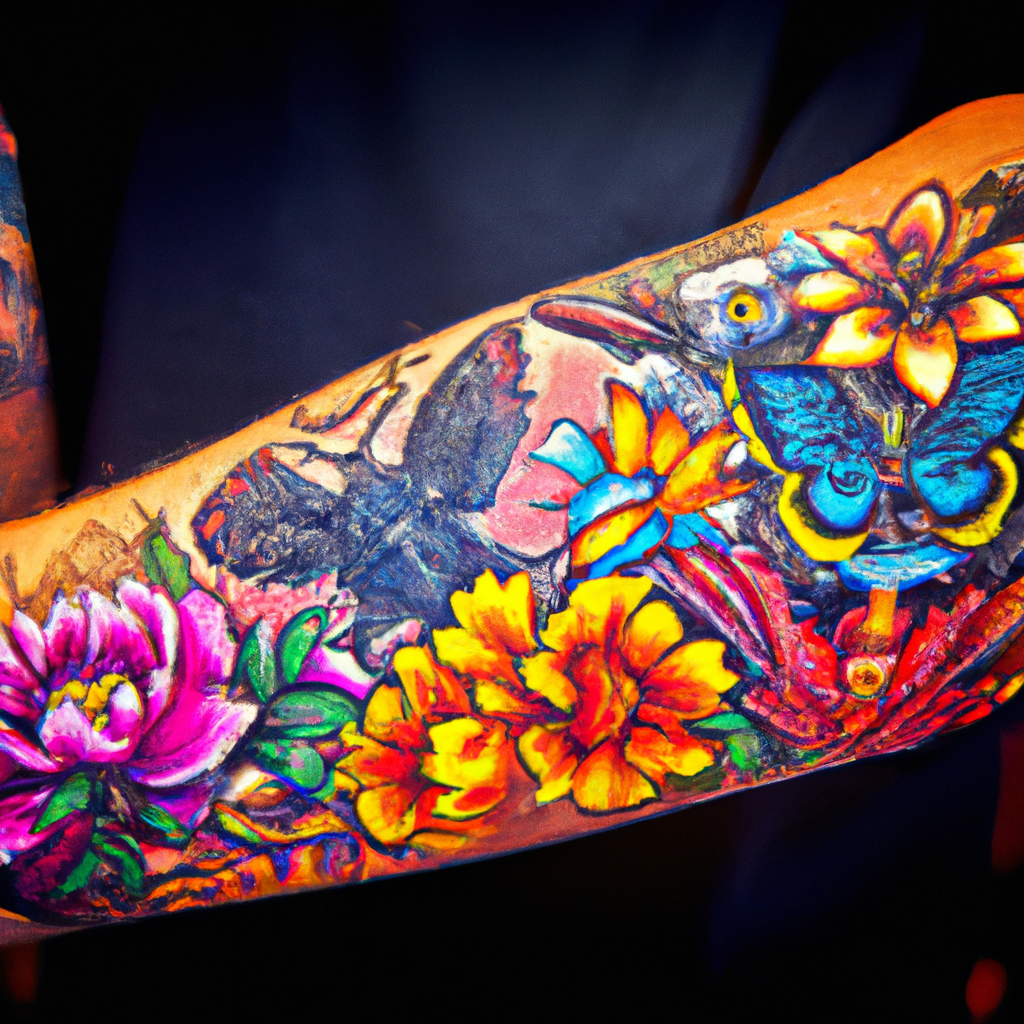
Maintaining Vibrancy and Longevity in Color
Proper Aftercare for Technicolor Tattoos
To maintain the vibrancy and longevity of technicolor tattoos, proper aftercare is essential. After getting a technicolor tattoo, it is crucial to follow the artist’s instructions regarding washing, moisturizing, and protecting the tattooed area.
Avoiding prolonged exposure to water, sunlight, and abrasive substances is vital during the healing process. Regular moisturizing with a fragrance-free lotion can help keep the colors vibrant and prevent dryness or flaking. Following these aftercare practices can help preserve the color integrity and overall appearance of the technicolor tattoo over time.
Choosing High-Quality Pigments and Ink
The quality of pigments and ink used in technicolor tattoos can greatly impact their vibrancy and longevity. Tattoo artists with an emphasis on technicolor designs prioritize using high-quality pigments and ink from reputable manufacturers.
High-quality pigments and ink are less likely to fade or change color over time, ensuring that the technicolor tattoo remains vibrant and true to the artist’s original vision. Tattoo artists who prioritize quality and invest in reputable products contribute to the longevity and visual impact of technicolor tattoos.
Protecting Tattoos from Sun Exposure and Fading
Sun exposure is one of the primary factors that can cause fading and dullness in tattoo colors. To protect technicolor tattoos from fading, it is essential to apply a broad-spectrum sunscreen with a high SPF to the tattooed area whenever it is exposed to sunlight.
Covering the tattoo with clothing or seeking shade when spending extended periods outdoors can also help minimize the fading effects of the sun. By taking appropriate precautions and avoiding excessive sun exposure, individuals can preserve the vibrancy and longevity of their technicolor tattoos.
Multicolored Tattoo Inspiration from Different Styles
Neo-Traditional Color Schemes and Motifs
Neo-traditional tattoos merge traditional tattooing techniques with vibrant, bold colors. These tattoos often feature a blend of timeless design elements such as roses, skulls, and animals with a contemporary twist. Tattoo artists skilled in neo-traditional style use color palettes that enhance the boldness and impact of the design while embracing the traditional aesthetic.
From rich, deep reds to bright and lively greens, neo-traditional color schemes allow for dynamic and visually striking technicolor tattoos. The combination of traditional motifs with vibrant hues creates a sense of nostalgia blended with modern sensibilities.

Japanese Irezumi and Vibrant Color Palettes
Japanese irezumi tattoos have a long and storied history, dating back centuries. These tattoos often feature intricate designs with vibrant color palettes that include shades of red, orange, blue, and gold. The use of bold and contrasting colors in Japanese irezumi tattoos creates a visually stunning and captivating effect.
The vibrant color palettes used in Japanese irezumi tattoos can depict legendary creatures, detailed landscapes, or symbols of strength and protection. Tattoo artists with expertise in this style can bring these vivid and symbolic designs to life through their mastery of color and shading techniques.

Realistic Portraits with Lifelike Color Hues
Realistic color portraits showcase the skill, talent, and attention to detail of tattoo artists. These tattoos aim to replicate the appearance of a person or animal with lifelike accuracy, including the subtle nuances of skin tone, hair, and eyes.
Artists specializing in realistic portrait tattoos utilize a wide range of colors and shading techniques to create depth and dimension. Careful color selection is crucial to capturing the essence and personality of the subject accurately. The use of vibrant and natural-looking colors brings these masterfully detailed tattoos to life.

Abstract and Geometric Multicolored Designs
Abstract and geometric tattoo designs offer a more unconventional and contemporary approach to technicolor tattoos. These tattoos emphasize geometric shapes and abstract patterns, often incorporating a vibrant and exciting color palette.
Color is an essential element in abstract and geometric tattoos, as it enhances the bold lines and shapes, creating a visually captivating and visually stunning design. Tattoo artists who specialize in abstract and geometric multicolored tattoos push the boundaries of traditional tattooing, resulting in unique and visually striking works of art.
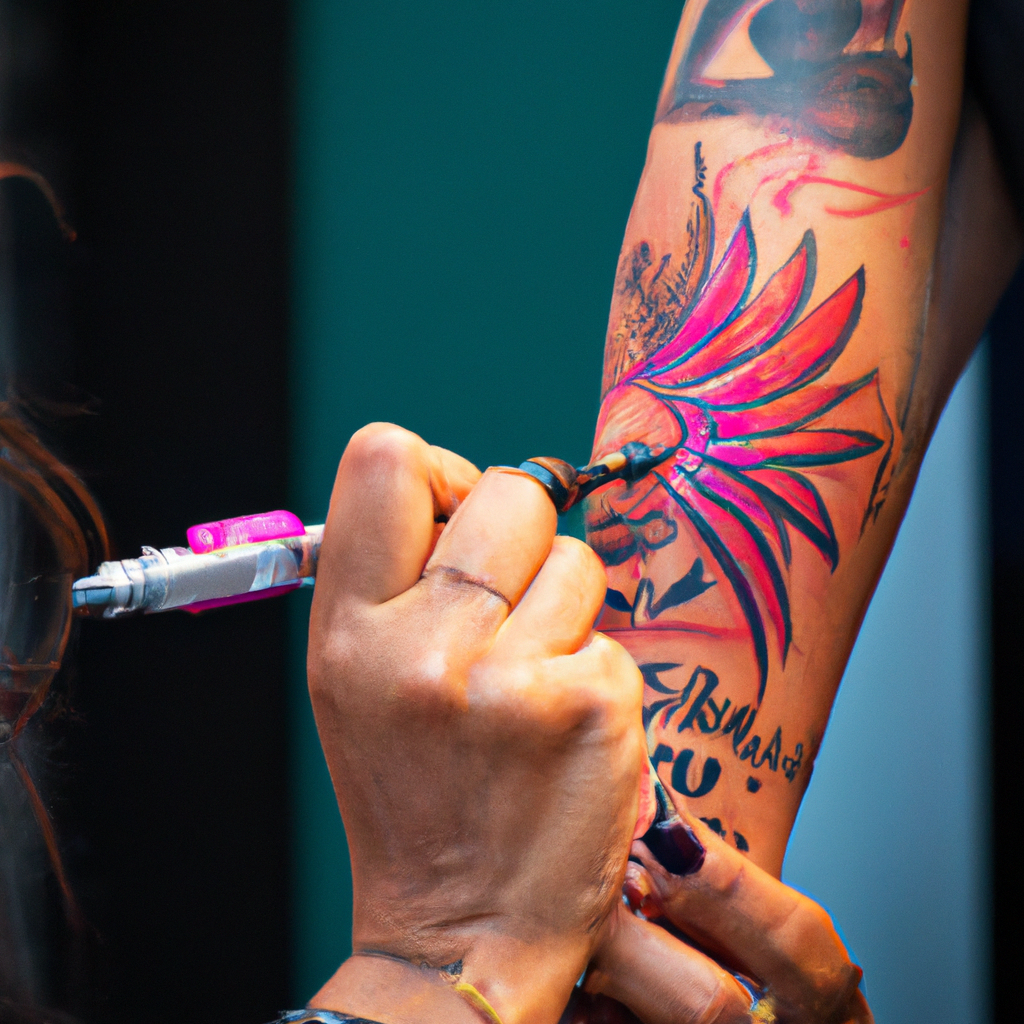
The Psychological Impact of Technicolor Tattoos
Emotional Associations and Reactions to Color
Colors have the power to evoke emotional responses and create specific moods or sensations. In technicolor tattoos, different colors can elicit different emotional reactions and contribute to the overall impact of the tattoo.
For example, warm colors such as red and orange can evoke feelings of passion, energy, and warmth, while cool colors like blue and green can create a sense of calmness and tranquility. Tattoo enthusiasts often select colors that resonate with their emotions and convey a particular mood or feeling they wish to express through their tattoo design.
Expressing Individuality and Personality Through Color Choices
Technicolor tattoos provide an opportunity for individuals to express their individuality and showcase their unique personality through color choices. Whether opting for bold and vibrant hues or more subtle and muted tones, color selection allows individuals to create a tattoo that reflects their personal style and preferences.
For some, vibrant and expressive colors symbolize a bold and outgoing personality, while softer and more subdued colors may align with a more introspective and reserved nature. The colors chosen for a technicolor tattoo are a reflection of the wearer’s identity and self-expression.
Psychological Symbolism in Multicolored Tattoo Designs
The choice of colors and the overall design of a technicolor tattoo can carry deeper psychological symbolism for the wearer. Colors have been studied in color psychology, and individuals may select specific colors based on the emotions or meanings associated with them.
For example, yellow can symbolize optimism and intellectualism, while purple may represent spirituality and creativity. Tattoo designs incorporating these colors can hold personal significance and serve as a reminder of the values or beliefs that the wearer holds dear. By incorporating psychologically symbolic elements into their tattoos, individuals can express and celebrate their inner world through their body art.

Challenges and Considerations for Tattoo Enthusiasts
Choosing a Reputable and Experienced Tattoo Artist
When opting for a multicolored technicolor design, it is crucial to choose a reputable and experienced tattoo artist. Technicolor tattoos require a high level of skill and expertise to ensure that the colors are vibrant, the design is well-executed, and the overall result meets the client’s expectations.
Researching and reviewing portfolios of tattoo artists who specialize in technicolor tattoos is a crucial step in finding the right artist. By selecting an artist with a proven track record in multicolored designs, tattoo enthusiasts can minimize the risk of disappointment and ensure a high-quality final product.
Budgeting for Intricate Multicolored Designs
Technicolor tattoos often involve more intricate designs, multiple color pigments, and longer tattoo sessions. As a result, they may be more expensive than simple, single-color tattoos. It is essential for tattoo enthusiasts to consider the budget required for their desired technicolor design.
The cost of a technicolor tattoo can vary depending on factors such as the size, complexity, and time required to complete the design. It is advisable to consult with the chosen tattoo artist to obtain an accurate estimate of the cost and plan accordingly.
Potential Pain and Discomfort During Extended Sessions
Multicolored technicolor tattoos often require longer tattoo sessions due to the complexity of the design and the need for various color applications. Extended tattoo sessions can lead to increased discomfort and fatigue, especially for individuals who have a lower pain tolerance.
It is important for tattoo enthusiasts to be prepared for the potential discomfort that may arise during longer tattoo sessions. Adequate rest, hydration, and communication with the tattoo artist regarding pain management techniques can help minimize discomfort and ensure a more pleasant experience.
In summary, technicolor tattoos have become a popular form of body art that allows individuals to express their creativity, individuality, and personality through the use of multiple colors. Understanding color theory, choosing the right colors, and utilizing different techniques can result in visually striking and meaningful technicolor tattoos. Skilled tattoo artists play a vital role in the creation of these designs, with their expertise in color blending, shading techniques, and knowledge of tattoo pigments. By properly caring for technicolor tattoos and considering their symbolic and emotional impact, individuals can enjoy vibrant, long-lasting, and personally significant body art.

